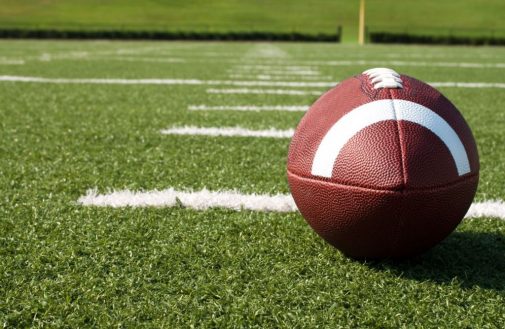6 preventable football injuries to be aware of this season

Football season is here. Injuries occur during games and practice due to the combination of high speeds and full contact. This means my colleagues and I here at Advocate Sherman Hospital in Elgin, Ill., and Good Shepherd Hospital in Barrington, Ill., begin seeing multiple football injuries in the doctor’s office. With the help of the American Academy of Sports Medicine, let me share the most common football injuries that occur and how to prevent and treat them.
Top Football Injuries
- Knees: Knee injuries in football are the most seen in my profession, especially those to the anterior or posterior cruciate ligament (ACL/PCL) and to the menisci (cartilage of the knee). These knee injuries can adversely affect a player’s long-term involvement in the sport.
- Ankles: Football players also have a higher chance of ankle sprains due to the surfaces they play on and the cutting motions the sport requires.
- Shoulders: Shoulder injuries are also quite frequent, and the labrum (cartilage bumper surrounding the socket part of the shoulder) is particularly susceptible to injury, especially in offensive and defensive linemen. In addition, injuries to the acromioclavicular joint (ACJ) or shoulder are often seen in football players.
- Concussions: Football players are at very high risk for concussions. A concussion is a change in mental state due to a traumatic impact. Not all of those who suffer a concussion will lose consciousness. Some signs that a concussion has been sustained are headache, dizziness, nausea, loss of balance, drowsiness, numbness/tingling, difficulty concentrating, and blurry vision. The athlete should return to play only when clearance is granted by a health care professional.
- Overuse Injuries: Low-back pain, or back pain in general, is a usual complaint in football players due to overuse. Overuse can also lead to overtraining syndrome, when a player trains beyond the ability for the body to recover. Patellar tendinitis (knee pain) is a typical problem that football players develop and can usually be treated by a quadriceps strengthening program.
- Heat Injuries: Heat injuries are a major concern for youth football players, especially at the start of training camp. This usually occurs in August and early September when some of the highest temperatures and humidity of the year occur. Intense physical activity can result in excessive sweating that depletes the body of salt and water. The earliest symptoms are painful cramping of major muscle groups. However, if not treated with body cooling and fluid replacement, this can progress to heat exhaustion and heat stroke— which can even result in death. It is important for football players to be aware of the need for fluid replacement and to inform medical staff of symptoms of heat injury.
How to Prevent Football Injuries
- Stay active during summer break to prepare for return to sports in the fall
- Have a pre-season health and wellness evaluation
- Perform proper warm-up and cool-down routines
- Consistently incorporate strength training and stretching
- Wear properly fitted protective equipment (ex: helmet, pads and mouth guard)
- Tackle with the head up and do not lead with the helmet
- Hydrate adequately to maintain health and minimize cramps
- Speak with a sports medicine professional or athletic trainer if you have any concerns about football injuries or football injury prevention strategies
Dr. Joshua Alpert is an orthopedic surgeon on staff at Elgin-based Advocate Sherman Hospital who is trained in sports medicine and arthroscopy. He is a physician with Midwest Bone & Joint Institute, which has served the Chicago area for over 30 years.
Related Posts
Comments
One Comment
About the Author
Dr. Joshua Alpert is an orthopedic surgeon on staff at Elgin-based Advocate Sherman Hospital who is trained in sports medicine and arthroscopy. He is a physician with Midwest Bone & Joint Institute, which has served the Chicago area for over 30 years.


















Since most sports are full contact sports, injuries are common among players, especially football players. Of course, any sport has its number of injury to players. However, there are ways to prevent them while playing. If you’re prone to knee injuries, then wearing a knee brace is one way to help prevent any injury to your knees.
Thank you for this post. This is helpful.